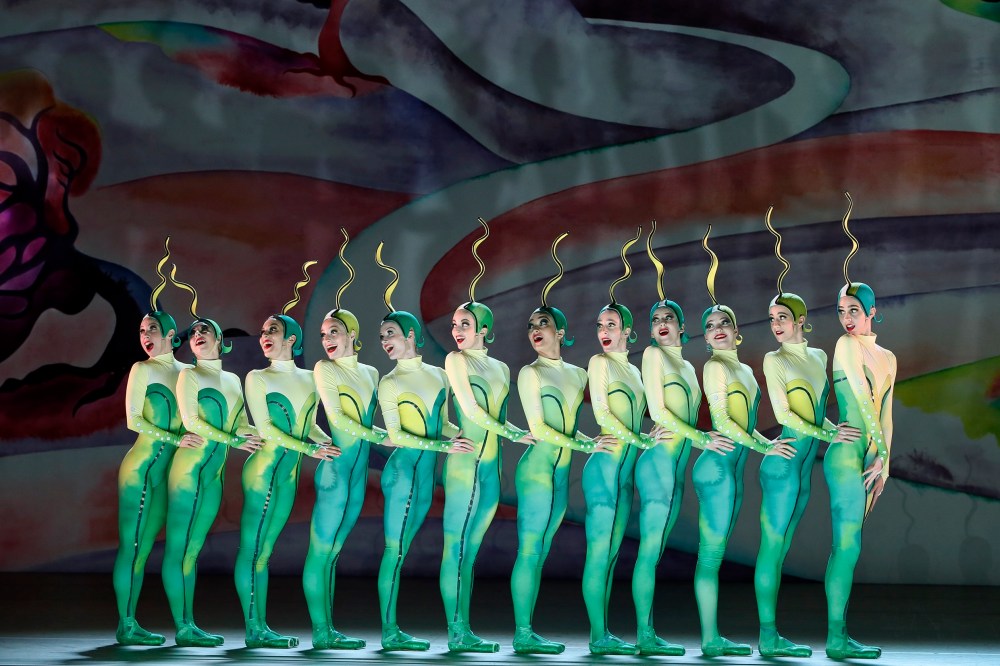Choreographed by Graeme Murphy, adapted from Oscar Wilde by Murphy and Kim Carpenter. Queensland Performing Arts Centre, Brisbane, February 25.
Graeme Murphy’s The Happy Prince was to have premiered last year but illness intervened and the choreographer wasn’t able to complete the ballet in time. The Australian Ballet quickly rescheduled it to open the 2020 season in Brisbane. The knock-on effect is that The Happy Prince will be seen in Melbourne from late August and wrap the year up in Sydney. That makes it look very much like a closing of the circle. Murphy’s wildly successful and much revived version of Swan Lake was the first ballet TAB artistic director David McAllister commissioned when very new in the job and The Happy Prince is his last new full-length ballet. McAllister announced his retirement last year and his two-decades reign will end in December this year.
It would be good to be able to say The Happy Prince is just the ballet with which to farewell McAllister; that it’s that marvellous beast, a ballet ostensibly for children that works for both young and old and will have a long life. It’s hard to see happening. The ballet is both too much and not enough.

The Oscar Wilde morality tale that inspired the piece is brief and to the point. The imposing golden statue of a once-happy, cossetted Prince sees that the world at large is full of misery and misfortune. With the help of a gadabout Swallow he strips himself of all finery, gives it to the poor and achieves a state of grace.
Having been delayed by an abortive love affair with a slender reed (cue for reed instruments to feature in Christopher Gordon’s new score), Swallow misses the opportunity to migrate south with his family – to Australia, of course. That’s how he comes to be fluttering around the bejewelled statue and to learn the lesson that it is much better to be kind and generous than to be rich.

The visual possibilities are obvious and co-adapter Kim Carpenter’s designs are richly expressive. A bleak, jumbled cityscape represents the Prince’s former domain, here represented in the immediate aftermath of war to explain, not terribly successfully or necessarily, why a statue to the Prince has been erected. Swallow’s world is saturated with colours never seen in nature and cheeky flora and fauna who would be at home on a burlesque stage. The Mayor and Mayoress, the latter danced by a man, are grotesques in exaggerated finery. There are delightful toys from the Prince’s childhood and heavies who create mischief in the town square.
Moment by moment it looked just fine but the need to fill 90 minutes of stage time turned out to be too much for this slender story to bear. Wilde ended his story with the Happy Prince and Swallow in Heaven; Murphy’s paradise is a surf beach with a fine break. All ended in a blaze of showbiz razzle-dazzle and sunny optimism, a crowd-pleasing ending that drove away any thoughts of sacrifices made.
Extra characters and new incidents, not all of them crystal clear, blunted the focus, although it’s possible to argue that had Murphy provided more extensive pure dance sequences the time would have gone by in a flash. Marcus Morelli as Swallow had fewer Bluebird-style moments than expected, for instance and there was an underuse of the expressive possibilities of classical technique. One couldn’t help feeling the company’s talents were being under-exploited.

Turning a group of reeds – the Reedettes – into a rather underpowered version of the Rockettes didn’t quite cut the mustard. It also didn’t help that on opening night Murphy’s blend of classical and contemporary movement didn’t sit entirely comfortably on the company and there was a distinct whiff of a too-brief rehearsal period.
The best moments in The Happy Prince were when things were dialled down; when there was dance to stir the soul. A section for a neglected artist – a substitution for Wilde’s starving playwright – was overwrought and unmoving but a glowing, late-breaking duet for Swallow and Match Girl – Morelli and Benedicte Bemet in the first cast – fell on grateful eyes, ears and heart. So did several searching moments for the Prince (Adam Bull), who wasn’t given not quite enough to do.
At these times it was possible to appreciate more deeply Christopher Gordon’s new, highly detailed score, rendered vividly by the Queensland Symphony with Nicolette Fraillon at the helm. Gordon’s music registered as a sophisticated stream of consciousness that underscored character, mood and place but on an initial hearing, wasn’t as effective as a clear-cut driver of movement or emotional intensity.
And isn’t that what we want from a story ballet? To feel?
Ends February 29. Melbourne, August 28-September 5; Sydney, November 27-December 16.